UC Blogs
Revisiting the Issue of Monarch Butterflies Missing from California Classrooms
A monarch butterfly caterpillar goes through five stages or instars before it J's and becomes a jade-green chrysalis. Scientists estimate...
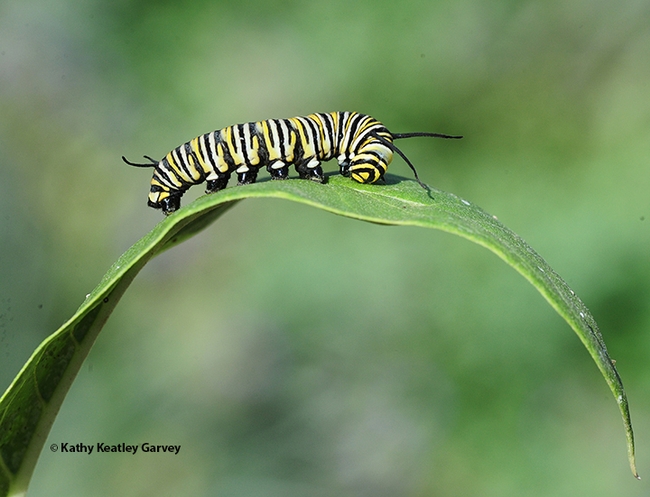
A monarch caterpillar crawling on a milkweed leaf. (Photo by Kathy Keatley Garvey)
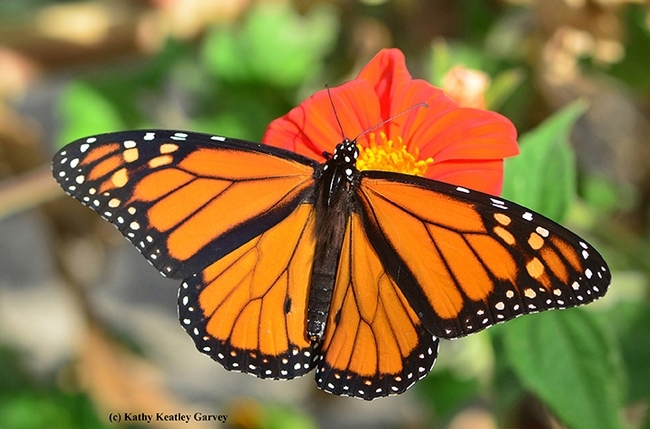
A male monarch butterfly foraging on a Mexican sunflower (Tithonia rotundifola) in a Vacaville pollinator garden. (Photo by Kathy Keatle Garvey)
Spring Miku
Spring blossoms full of color
Super blooms beginning their show
Spring fever, allergies and plant rebirth
'Dr. Zac' to Present UC Davis Seminar on Honey Bee Research, Life Experiences
"A lot of students take a gap year between their undergrad and grad program," says honey bee scientist Zac Lamas, a National Institute of...

Honey bee scientist Zac Lamas, a National Institute of Food and Agriculture (NIFA) postdoctoral fellow with the USDA's Agricultural Research Services.
Lotus Love
I recently received a gift from a friend, a lovely brooch pin that is shaped like a lotus (Nelumbo nucifera) flower, with beautiful oval-shaped petals. My friend said that she chose the lotus brooch because of my love for yoga and nature.
“Lotus” is a term used in yoga to describe a cross-legged sitting pose for meditation, where each foot is place on the opposite thigh. The lotus flower represents strength, self-realization, and positive transformation. The reason the lotus flower represents these positive elements is because the plant seems to be “reborn” each day during its bloom cycle.
The lotus plant is rooted in mud,and the flower will rise above water for a full dose of bright sunshine. At night, the whole plant - beautiful petals and all – will “dive” back under the mud where it instead will remain immersed all evening. The next day the flower will again push up through the mud and surface to open its petals for the day. The petals have a waxy protective coating that repels water and dirt, so the flower emerges cleansed of the mud and ready for a sunny day of nourishment. The flower petals will open clean and shiny each day, which is why the lotus has become a symbolic association with rebirth.
I now wear the lotus brooch gift on my favorite gardening hat. I appreciate the sentiment of the gift, which is the same feeling I carry whenever I am digging in earth while tending my garden.
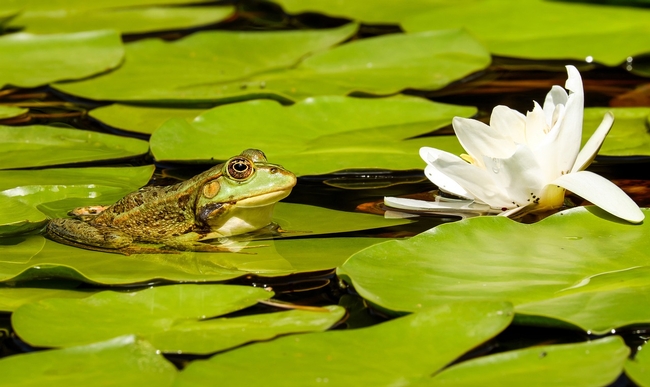
frog-2504507 1280 - Pixaby, Couleur
Decisions, Decisions: Solar Eclipse or a Bumble Bee?
What insects did you see during the Solar Eclipse, dubbed "The Great North American Eclipse?" And what were they doing? In some parts of North...
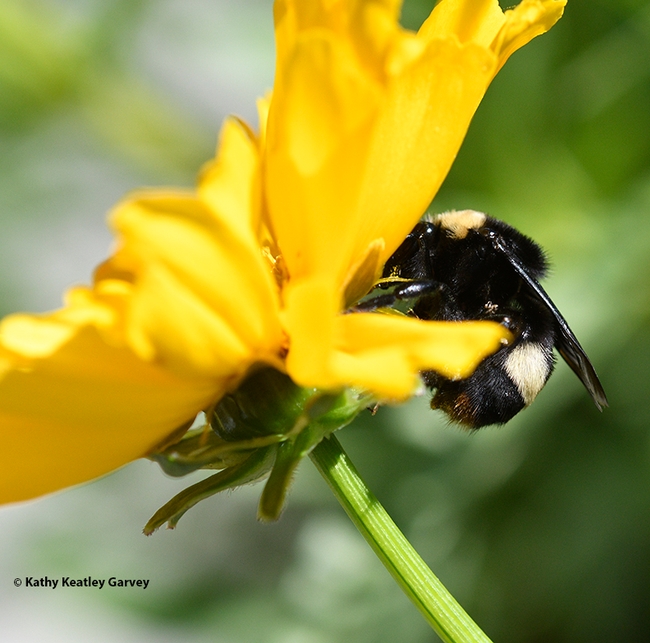
A queen bumble bee, probably a Bombus californicus, forages on a Coreopsis during the April 8th solar eclipse. (Photo by Kathy Keatley Garvey)
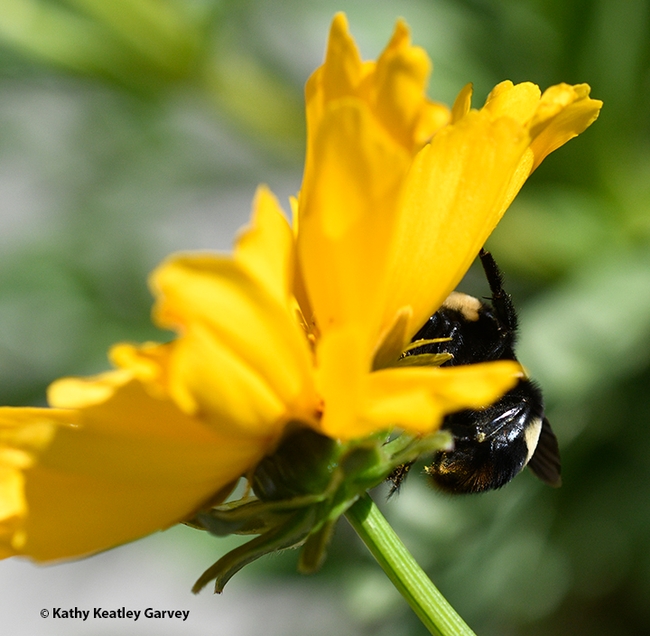
Brace yourself! A bumble bee appears to hold up a petal of the Coreopsis. (Photo by Kathy Keatley Garvey)
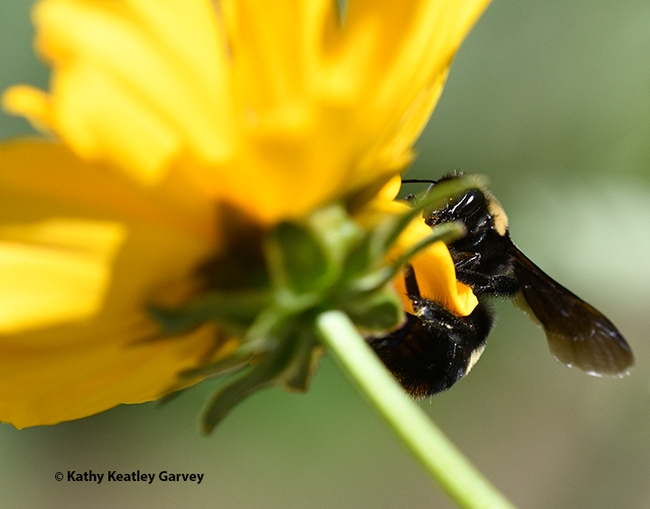
A little twist here, a little twist there. The bumble bee adjusts. (Photo by Kathy Keatley Garvey)
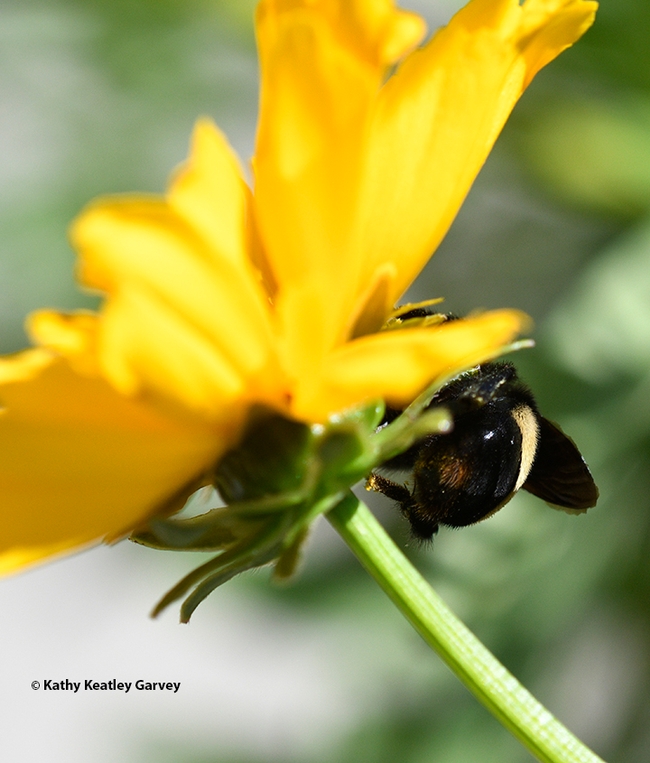
The end! The bumble bee is unaware of the photographer--or the solar eclipse. (Photo by Kathy Keatley Garvey)




